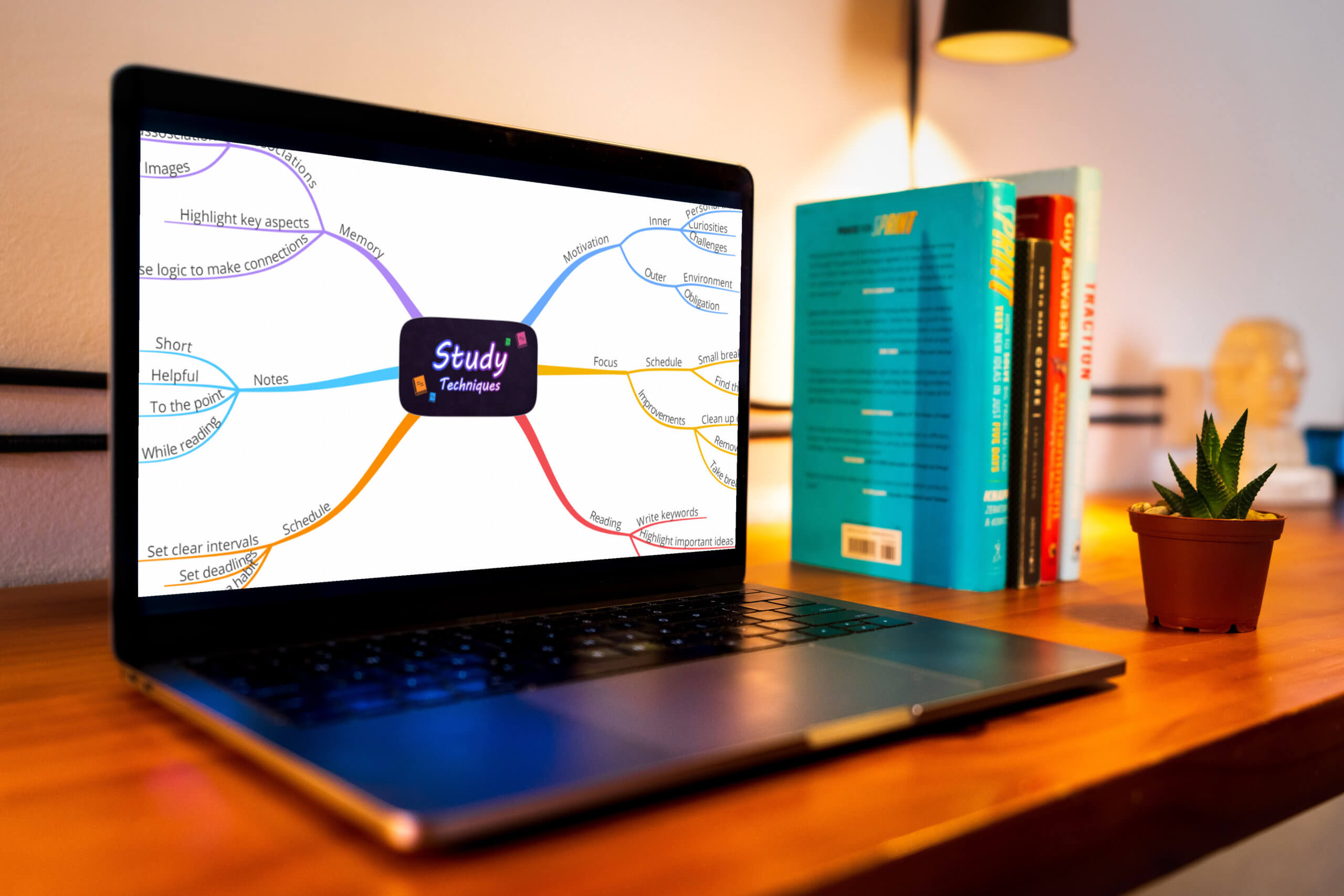February 15, 2022
Mind mapping to assess students

Amongst mind mapping’s many uses in education is its ability to be used for the pre and post-assessment of students. Minds maps aid our comprehension and memory, making them the ideal tool for measuring a student’s level of understanding upon a topic before and after it’s taught.
Additionally, beyond being a medium for visually reflecting students’ grip on a topic, mind maps bring an engaging element of creative energy into education which is so often missing. Encouraging students to work via mind maps is therefore likely to inspire them to interact with a topic much more than if they were to simply be asked to answer questions or write an essay for instance. In fact, the radiant structure of mind maps will encourage students to branch out with more ideas and more connections when capturing what they have learned, making assessment via mind maps beneficial for both students and teachers alike.
This holds true for most students considering that the majority of people are either visual or kinaesthetic thinkers. However, another set of students will also greatly benefit when being assessed via minds. Those who are dyslexic. As the formation of mind maps don’t rely on students’ language or writing skills, students will have the freedom to interpret topics in their own way, and express their ideas even metaphorically. As a result, mind maps offer a more accurate and realistic reading of a student’s knowledge, rather than focussing on traditional skills like spelling or grammar.

How to apply mind mapping to pre and post-assessment
Below are two methods for practically applying mind mapping to pre and post-assessments. The first is for older students to try, and the second is for younger students.
Older Students
Pre-Assessment
Begin by introducing your topic to your students. Then, ask them to mind map their initial thoughts and responses. These initial ideas can stem from anywhere; their own interpretations, what they already know, other parts of the curriculum, or what they’ve heard in the media, and so on.

Next, teach the topic to your students. Ensure they keep hold of their original maps so they can use them as a reference to show how much they are learning.
Post-Assessment
Once you have taught the topic to your students, instruct them to create a summative assessment mind map. They can add to their original pre-assessment map if they wish. They should be able to add in much more accurate detail, and make connections between different areas of the topic, plus show evidence of independent thinking (looked for in a formal exam marking criteria).

Hint: Students can also use their summative maps as revision aids or to present their work.
Younger Students
Pre-Assessment
Make the pre-assessment a class exercise. Start by creating a group mind map, on which you can capture the whole class’ initial ideas and opinions. We’ll use a French vocabulary lesson as an example. This task works best when the mind map is projected onto a wall to include everyone; the visual characteristics of the mind map, as well as being able to see the map come to life, will not only help students recall information but will also really fire up their imaginations!

Next, teach your students the topic.
Post-Assessment
The next step is to present your students with a sample map which includes the topic information that they have been taught in a random structure around the central idea. For this example you could use English translations of French words and get your students to place the English equivalent next to the correct French word. The aim is to get the students, again in a group, to make the correct connections between these ideas and provide their own understanding to rearrange the map correctly.

Getting the students to restructure the map means they can participate in self-assessment, and you can gain a thorough understanding of the depth of knowledge they have acquired.
Summary
Learning is an endless vocation which doesn’t start nor end in the classroom, regardless of what students might think. For teachers devoted to helping students on their educational journey, the expansiveness of it is often both awe-inspiring and motivational. Make sure that a core objective of learning – gained understanding – is therefore without limits too, by being done justice on the infinite canvas of a mind map!
What would your specialist subject be on Mastermind? Can you imagine how great a mind map you could create upon it? Share below in the comments and consider what this method could do for the assessment of students.
Mind mapping is a valuable tool for assessing students’ understanding and encouraging creative thinking. To take your mind mapping experience to the next level, try Ayoa an intuitive platform designed to enhance learning and organization.
